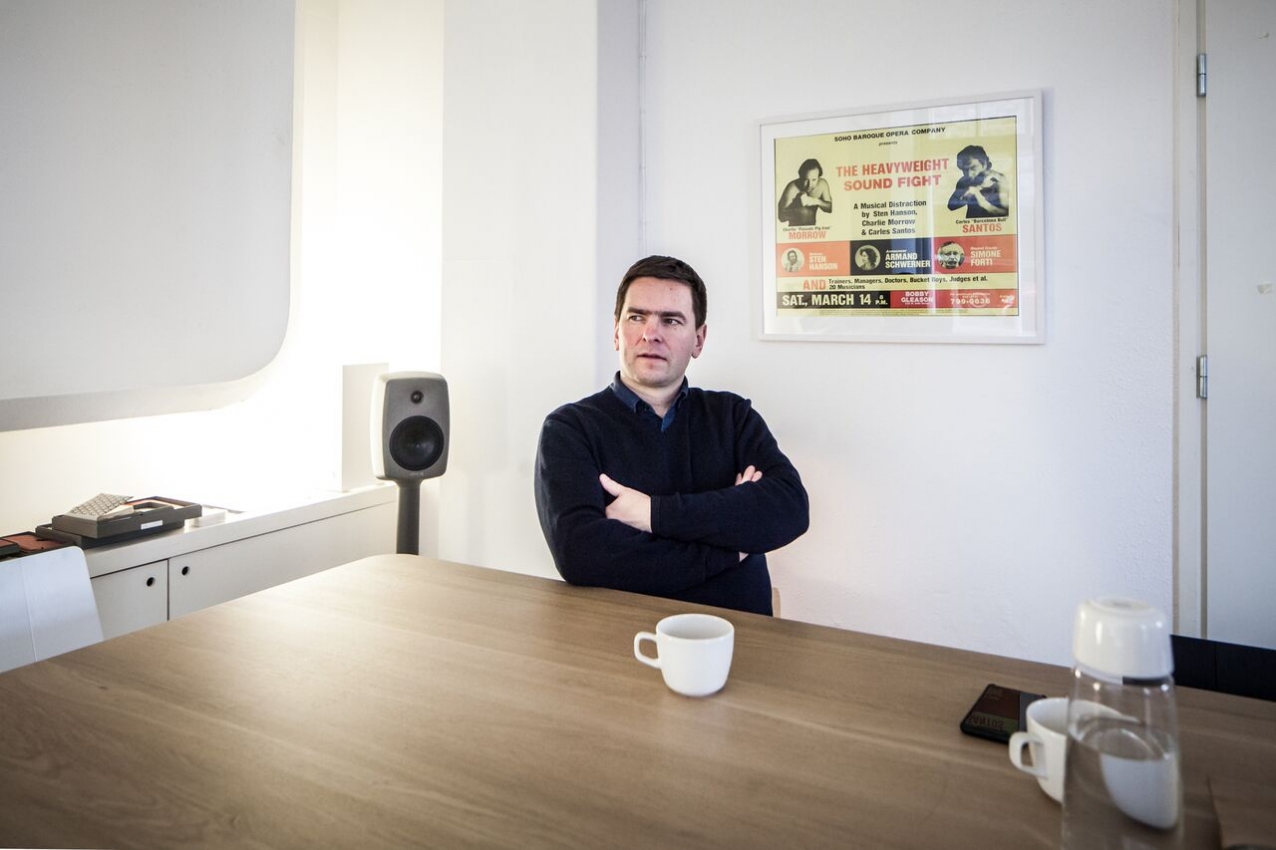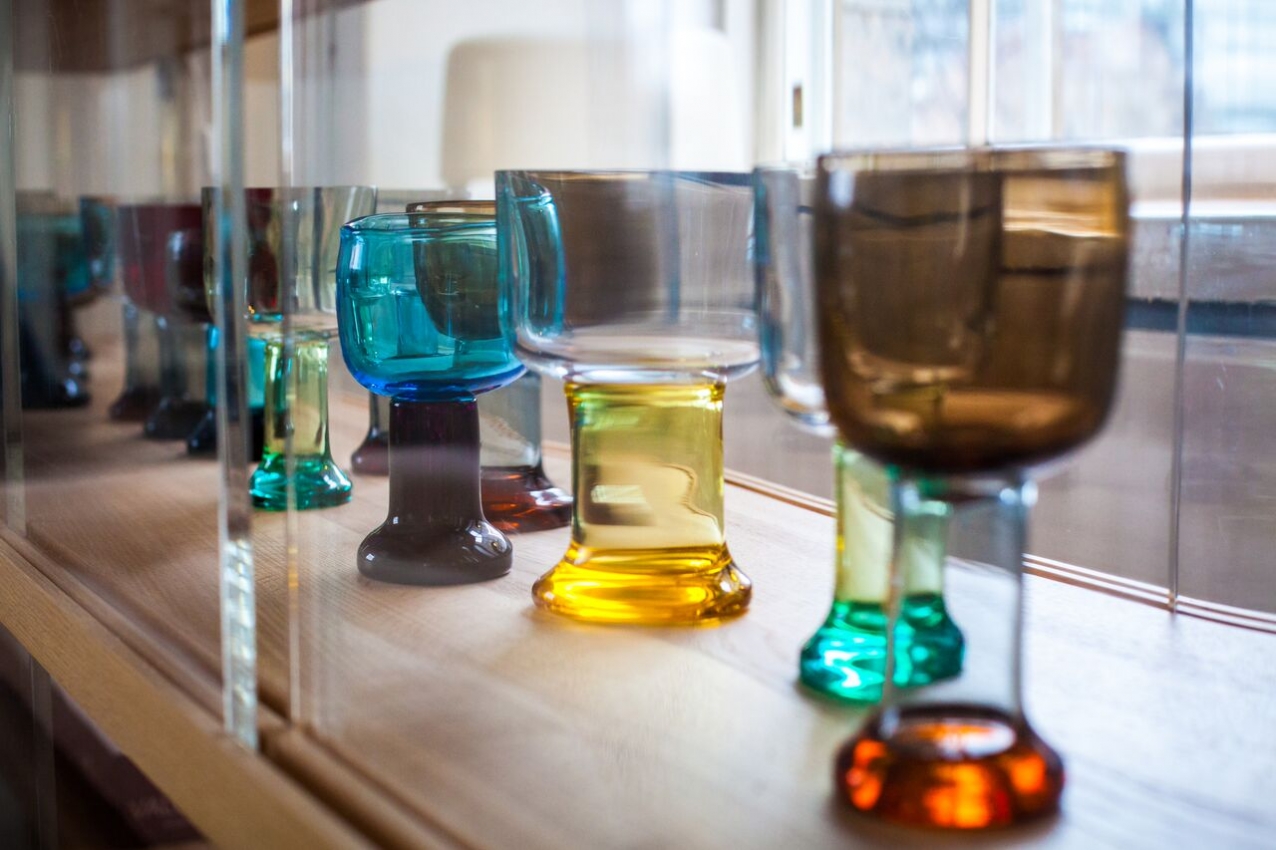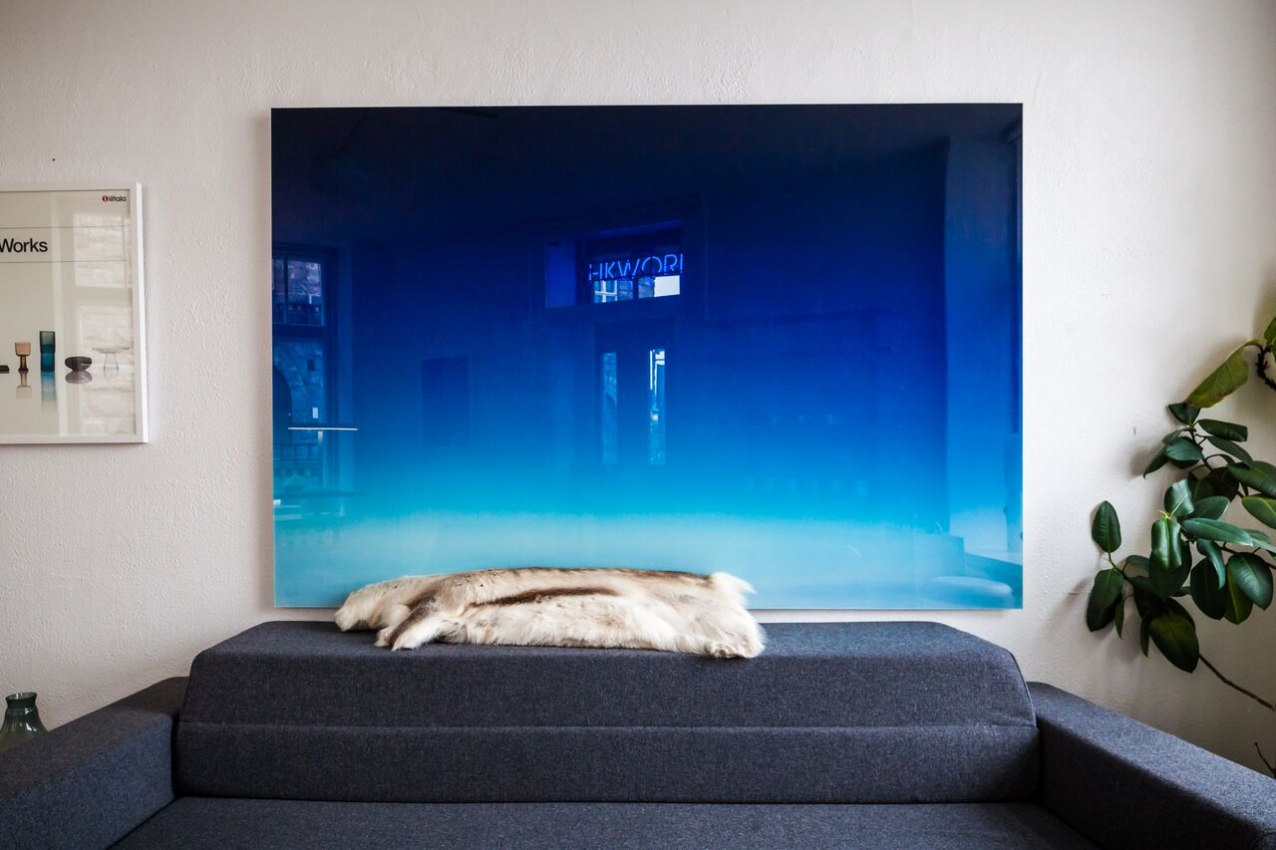Weekly Studio: Harri Koskinen

Crystal Bennes visited Harri Koskinen's studio. The two talked about his part in the Iittala x Issey Miyake collaboration, as well as the aesthetics of Finnish design.
Weekly’s writer Crystal Bennes visited Harri Koskinen’s studio. The two talked about his part in the Iittala x Issey Miyake collaboration, as well as the aesthetics of Finnish design.
Crystal: Why don’t we start with a potted biography? Tell me a bit about your background.
Harri: I’m from Karstula, a small community in central Finland. I did my first design studies at Lahti Institute of Design, and then afterwards at the University of Art and Design of Helsinki, now better known as Aalto University. I did a lot of workshop studies at Aalto, I was so interested in learning by doing – I felt that this was the way for me, instead of sitting in the lectures.
Crystal: Well, that’s definitely an education!
Harri: I guess I wasn’t what you would call a proper university student. I was too busy enjoying the smell of the materials. We had a course in collaboration with Iittala where they promised one student a scholarship for a summer trainee position after the course, I was chosen and spent the summer of 1996 at Nuutajärvi glassworks, which at that time was part of Iittala’s glassworks.
Crystal: So, your relationship with Iittala goes back a very long time?
Harri: That’s right. After the traineeship, I continued working for Iittala as a freelancer. At that time, the company was only really producing glass and everyone was based at the glassworks. Then, in 1998, I was invited to become an in-house designer, where my main role was essentially to fill the gaps in Iittala’s portfolio – various tableware objects, things like that. It was all very straight-forward thinking at the time, not very much conceptual work at all.
Crystal: It sounds as if your strategy as a student really paid off.
Harri: Yes, I had my monthly salary and it was great. Those were they days when it wasn’t so much about design thinking. It was more like Iittala was a factory where we needed to be full-speed all the time and that we needed to understand… Well, actually, at the time, we thought that people should understand us, not the other way around. That if we offer something then people should love it.
Crystal: Pretty traditional?
Harri: Exactly. Not bad necessarily, but definitely a different approach. So, I spent four years at the Iittala glassworks until 2001, but during that time I had also founded my company, Friends of Industry. I started, little by little, getting attention for my own work – many of them projects I had made when I was still studying. Block Lamp, for example, I made that at school. I had an exhibition in ’98 at Salone Satellite, with two other colleagues, which did quite well with a nice response and press coverage. But, in 2000, Issey Miyake invited me to have my first solo exhibition in his gallery in Tokyo, and that was a big turning point for me.

Crystal: And that invitation was the result of the show in Milan?
Harri: Maybe. I’m not entirely sure. Around the same time, I also had interviews in a few international magazines, and the Miyake design studio are always scanning the design world to see what’s going on. I guess they just saw this guy from Finland and then invited me. From that exhibition in Japan, I made so many contacts, so many new clients began to approach me. And with Iittala, we decided that I would continue as a freelancer, so that I could divide my time between my own work and consulting for them. I’ve now been in this position as Design Director for them for four years.
Crystal: It’s interesting because the recently-launched Iittala x Issey Miyake collaboration – which has been getting a great deal of press coverage – now makes so much more sense in light of your personal history. What a lovely sense of the circle coming back around in terms of your relationship with these two companies.
Harri: It’s wonderful for me. I’ve also been very surprised by how things have happened, how it all somehow makes sense. I’ve been working with Iittala for 20 years and Miyake for about 15, so it has been very nice to bring them together like this. It’s also been about perfect timing. Iittala is really at a time when they’re challenging themselves as a company – it’s not about portfolio filling any more. When the studio started to have a closer interaction with Iittala, we thought that we needed to do something different and remarkable. This is both Iittala and Miyake’s first brand-to-brand collaboration. That’s a very big deal.

Crystal: Something I’ve noticed about your work, when looking through a timeline of past projects, is a feeling of a transition, from more traditional pieces like tables and chairs, towards an increasing emphasis on less-traditional products, such as user interfaces, fire blankets and even utility trucks. Has this been a conscious decision on your part, or has it been more a client-side change?
Harri: It’s a bit of both. I’m keen and curious about the collaboration if the other party is interesting and especially when there are many aspects to explore. Of course, I have to evaluate whether it makes sense and whether I’m interested, but typically, if someone is asking me, then they have an interest in me, too. I suppose the other thing is that when you’re a student, you can do whatever you want, design your own brief. But when you’re in the real world, you don’t get these kind of interesting clients straight away. When you start your own studio, you almost have to create a design language first, build your own world – expressed through things like tables and chairs – which is easy for people to understand.
Crystal: So you first have to build a comprehensible language through obvious forms and eventually, once people have a clear sense of your visual world, clients will start asking for faucets and smoke detectors?
Harri: I think so, yes. But I also think this is something which needs to be changes. Of course there are good examples of people who have been a bit more creative from the beginning. Here in Finland, COMPANY is a good example – Aamu [Song] and Johan [Olin] have been doing small, great, crazy things for fifteen years and still going!

Crystal: Something that I always ask during these interviews is the extent to which your understanding and approach to aesthetics and materiality connects to Finnish aesthetics. Do you feel like what you do is part of this tradition?
Harri: Well, I’m Finnish and born in Finland – that’s the reason why we’re talking about this subject. But, as I’m sure you understand, it’s a kind of learning process. When I was in high school, I didn’t have any idea about the “Finnish design tradition”. Of course, it surrounds us all the time, but not in an obvious way since I’m from a farming family and we didn’t have any design object at home. Of course, we had Arabia and Iittala for daily use, like any Finnish home.
Crystal: But that’s still a fairly solid foundation…
Harri: Absolutely. And it’s something subconscious running in the background. It’s not that you do Finnish design on purpose, but it stems from an understanding of your roots and your culture and that’s it, really. There has never been a time when I’ve found myself thinking: “does this fit with Scandinavian design?” It’s more this culture of making things make sense. Is it functional? Is it rational? Take the frills off, and make sure it’s solidly grounded. But also, the idea that if you do have a reason to add patterns, since in some cases we need to add a kind of topping, or artistry, then we need to have a very strong understanding of the role of the designer, because the idea of the end user has changed.
Crystal: So, it’s about how you balance your sense of aesthetics, or artistry in this case, with the needs of the end user on a broader scale?
Harri: Exactly. When we are doing something very universal – like a fire alarm – it cannot be too artistic. It needs to stand out from the crowd, but if you take it too far, you risk making your product unsuitable for, for example, a broad, global market.

Crystal: To take one specific project, I would love to talk about your truck for Arctic Machine. I find this such a fascinating project because it’s design applied to an area – very technical, automotive infrastructure – which, as people in Finland often remark, is typically dominated by engineers.
Harri: I’m glad you bring it up, because I haven’t talked so much about this project. We worked on this step-by-step, since, to be honest, I wasn’t really sure whether we could do it. When we started, it wasn’t that they came to us and said, “build us a new truck”. Instead, it was that they had a problem with their existing system – essentially a big truck with salt and sand dispensers. The problem was that they’d built the system over many years, adding bits here and there as needed, until they would up with an unmanageable, 60-component system. They wanted to reduce and streamline the system down to 30 components max, 20 if possible.
Crystal: When we started in the studio, in discussion with the client, we began by trying to understand how they wound up with this very complex solution, then working backwards step-by-step, breaking apart the different functions of the truck. We broke everything down into piece, which was actually very helpful for the client as well.
Harri:We realised that the spine, the core, was the most important thing. We also designed new containers out of rotational moulded plastic and then we modified the sand container and re-designed all of the construction in the new way. It was such an unusual project and it took such a long time. On the one hand it was so difficult, but on the other hand it was quite thrilling.
Crystal: It sounds like design pushed to the extreme limits of functionalism. Nothing to do with aesthetics, or even with form, really – it’s entirely about the system. Quite fascinating, really.
Harri: Ultimately, it’s just about helping our clients to do things in a better way.

Crystal: To finish up, since we’re here in your studio, let’s talk about your beautiful space.
Harri: I love this space. We’ve been here eight or nine years. It was being used by an architect, and I heard they were leaving. I got it just by knocking on the window. 100 years ago, when the building was first designed, it used to be a milk shop. We use it as a showroom and shop for our own designs, as well as an office space.
Crystal: I’m quite interested in how people work in their studio spaces and whether or not it there’s a sense of co-relation between the way people work and the spaces they work in…
Harri: Well, I live about two minutes walk from here, so I don’t know if it affects the way I work as a designer, but it fits in to my life in a very neat, easy way. I’m a designer, sure, but I’m also an entrepreneur and this profession isn’t only about “office hours” – it’s very valuable to have a space like this, close to my home and enjoyable to work in, because I often come here to work here on the weekends and in the evenings. For me, this is the heart of the city.